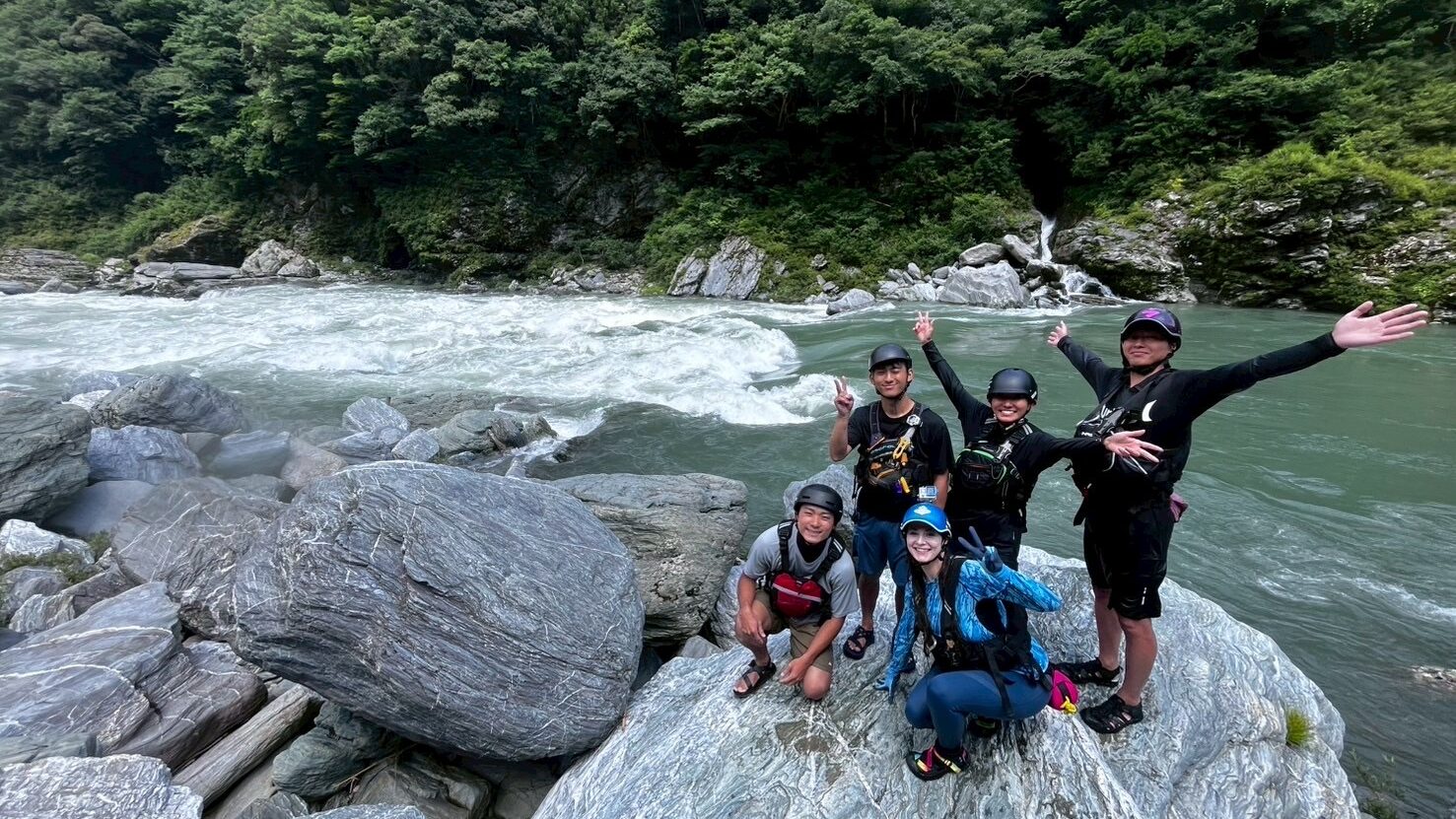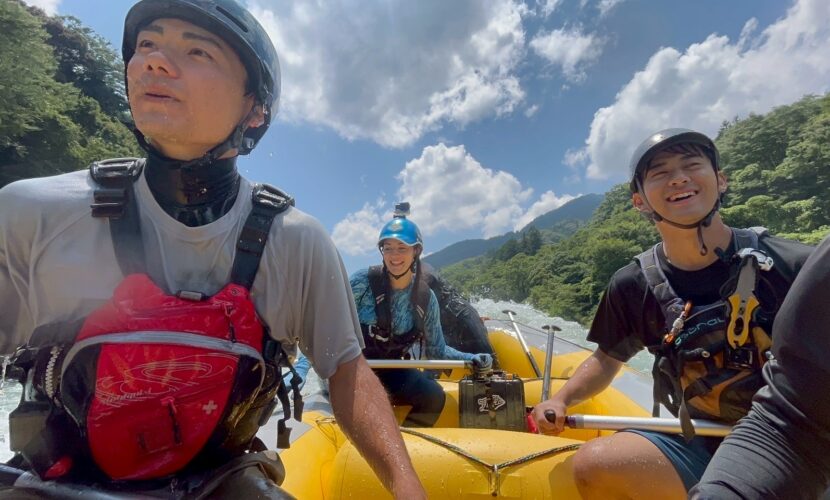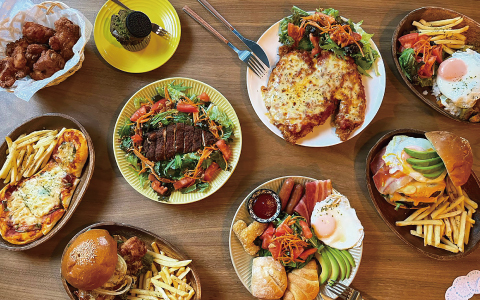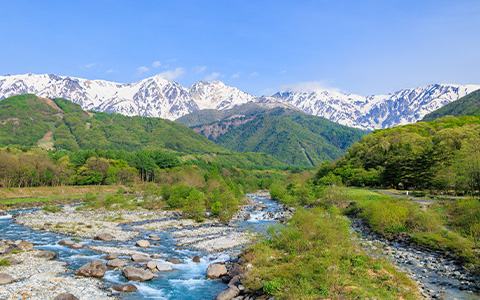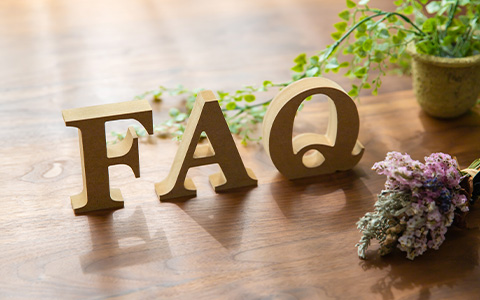In Japan, rivers are categorized as either Class A or Class B, depending on their size, importance, and potential flood impact.
🔹 Class A rivers are large and nationally significant, managed by the central government.
🔹 Class B rivers are smaller, with more local importance, overseen by the prefectural government.
River Difficulty Scale (International Classification):
- Class 1 – Gentle flow with small waves. Perfect for beginners and families.
- Class 2 – Mild rapids with easy navigation.
- Class 3 – Moderate rapids requiring more maneuvering and control.
- Class 4 – Strong, technical rapids demanding precise handling, scouting advised and rescue may be difficult without teamwork.
- Class 5 – Long, violent, and complex rapids with serious risk, requires advanced skills, fitness, and experience.
- Class 6 – Nearly impassable, highly dangerous rapids only attempted by expert teams under ideal conditions.
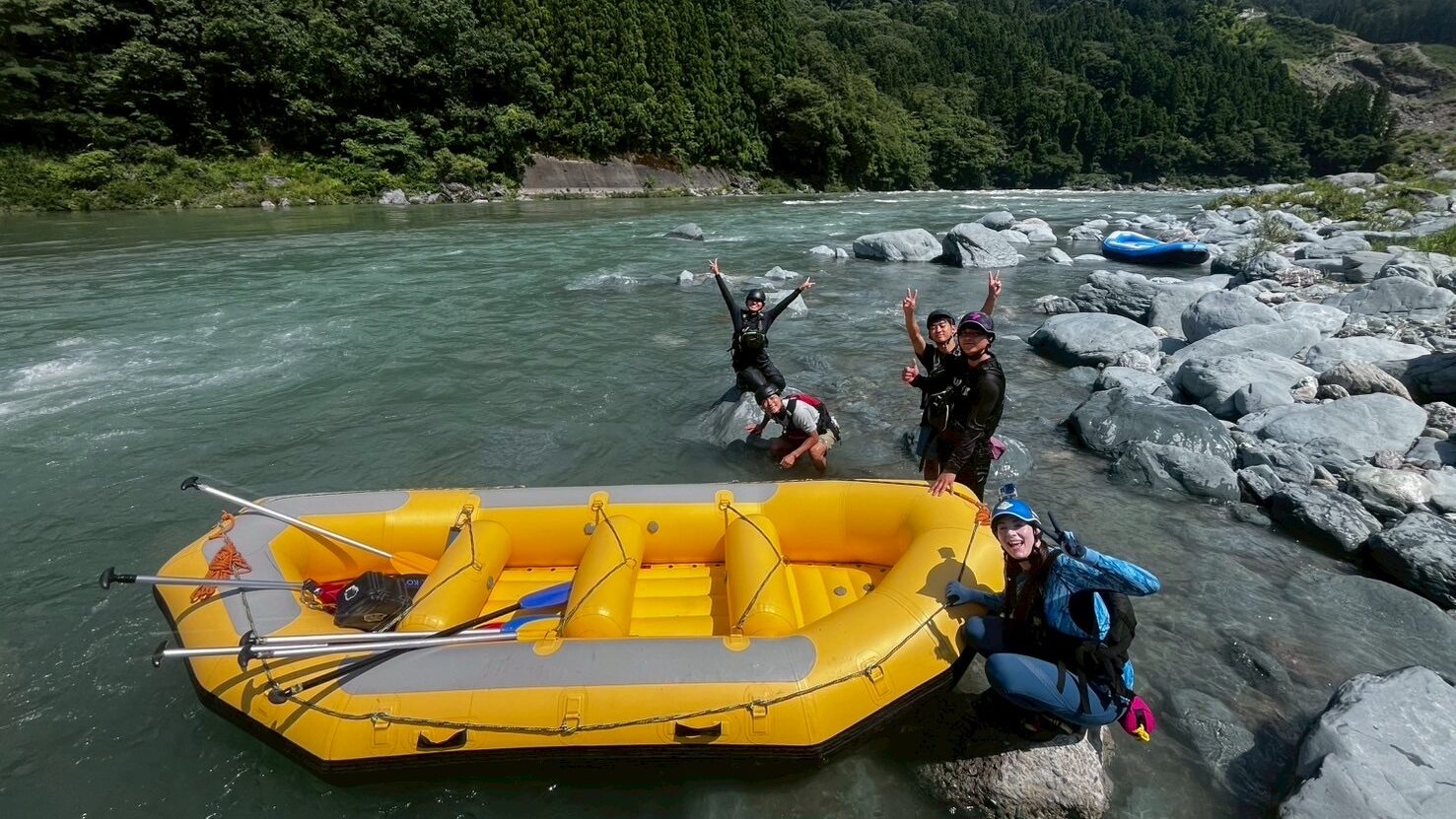
Recently, Hakuba Inn Bloom staff took part in a 4-day rafting training trip on the Yoshino River in Tokushima.
This incredible river is a Class A river that runs from Kochi to Tokushima Prefecture and features Class 4 rapids. It’s the largest river in Shikoku, stretching 194 km with a basin covering 3,750 km², almost 20% of the island!
The Yoshino River is often called Japan’s wildest river, and for good reason. Its clear water flows through dramatic gorges, forming steep valleys and stunning rock formations. It’s a hotspot for thrill-seeking rafters, and in 2017, it even hosted the World Rafting Championships at the famous Oboke and Koboke Gorges, home to some of Japan’s most exciting whitewater.
While our staff usually guide rafting tours on the Saigawa and Himekawa Rivers here in Nagano, you can feel confident knowing they’re JRCA certified and they’ve trained on one of the most challenging rivers in the country!
